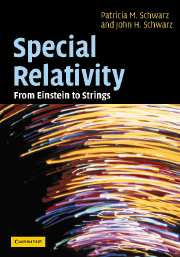Appendix 2 - Basic group theory
Published online by Cambridge University Press: 06 July 2010
Summary
Suppose that a subset H of the elements of a group G also satisfies the axioms for a group using the same multiplication rule as in the definition of G. In this case H is called a subgroup of G. Every group has two trivial subgroups. One is the entire group G itself, and the other is the one element set {e} consisting of only the identity element. Any other subgroups are called proper.
Whenever one has a group G with a subgroup H, one can define certain sets called cosets. Specifically, consider the set of group elements formed by multiplying each element of H from the left by a specific group element a ∈ G. This set has the same number of elements as H, but it is not identical to H unless a happens to belong to H. It is conventional to denote this coset by a H. More specifically, since we have used left multiplication, this is a left coset. Right cosets H a are defined in an analogous manner. Note that a coset contains the identity element e only if the subgroup H contains the element a−1. Also, since H satisfies the axioms of a group, this is equivalent to the statement that H contains a. Thus we learn that the coset is either equal to H or it does not contain the identity element. Thus all cosets, other than H itself, are not subgroups of G.
- Type
- Chapter
- Information
- Special RelativityFrom Einstein to Strings, pp. 359 - 361Publisher: Cambridge University PressPrint publication year: 2004

